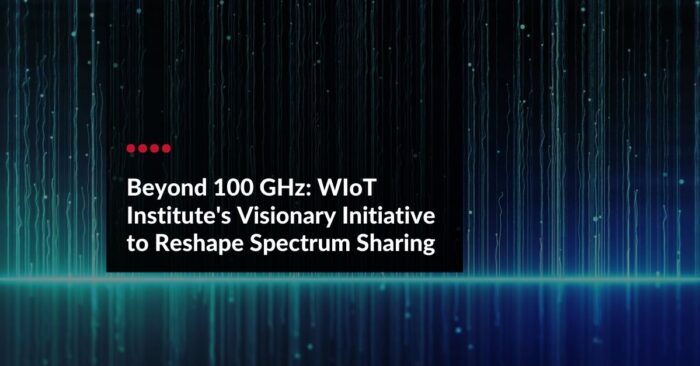Josep Jornet
Professor of Electrical and Computer Engineering

In an era of rapidly advancing technology, the quest for seamless connectivity and precise Earth observation has taken a giant leap forward. A visionary research initiative from WIoT Institute researchers, now supported by the National Science Foundation (NSF), could reshape the spectrum landscape above 100 GHz. Researchers aim to unlock the potential for coexistence between wireless networks and satellite-based passive sensing systems.
Spectrum Above 100 GHz: A World of Potential
The sub-THz spectrum, encompassing frequencies above 100 GHz, holds immense promise for diverse applications. Traditionally, remote sensing has concentrated on specific molecular absorption lines in narrow sub-bands within this spectrum. At the same time, recent advancements in radio frequency (RF) circuitry, antennas, and digital signal processing (DSP) have motivated the consideration of large bandwidths in the sub-THz range for sixth-generation (6G) wireless networks.
Current spectrum allocations, however, restrict the usage of more than 12.5 GHz of contiguous spectrum within the 100-200 GHz range. These allocations are designed to safeguard passive remote sensing services that require freedom from radio frequency interference (RFI). Both wireless communications and remote sensing need more bandwidths, preventing the realization of their full potential.
Innovative Spectrum Sharing Solutions
This project aims to break through the constraints of rigid spectrum allocations and facilitate innovative coexistence solutions between terrestrial 6G networks and remote sensing satellite systems. The project team, composed of experts in sub-THz communications and remote sensing from WIoT Institute in collaboration with Professor Steven Reising from Colorado State University, plans to leverage detailed RFI characterizations to create effective sharing strategies. By utilizing cutting-edge tools such as the WIoT Institute’s TeraNova platform and the TEMPEST-H8 sensor on the International Space Station (ISS), the team will characterize RFI at 165 GHz and develop data-driven models that aggregate interference from thousands of terrestrial devices.
In simple terms, the TeraNova testbed will be utilized to purposely interfere with the TEMPEST-H8 sensor on IIS and understand the impact of different system parameters, before numerically extending the results to the impact of not just one device, but the whole 6G network infrastructure on the ground. Based on these models, the team will develop custom solutions not just to minimize RFI, but to maximize the amount of resources available to both active communciation and passive sensing communities, including some of those recently presented by the team in the recent PIEEE paper “Coexistence and Spectrum Sharing Above 100 GHz.”
The project’s broader impacts extend beyond the laboratory. The outcomes of this research are expected to significantly influence standardization efforts and spectrum policy for next-generation wireless networks. Engaging with established standardization organizations such as IEEE, 3GPP, NextG Alliance, ITU-R, and the FCC, the WIoT Institute research team will promote their findings and contribute their expertise to shape the future of spectrum sharing.
To build trust and confidence in spectrum sharing and coexistence solutions, the project will provide open datasets and models to both the communications and remote sensing communities. The researchers will bridge the gap between these two sectors through workshops, tutorials, and other outreach activities.
This research will not only reshape the technological landscape but also impact education. The team is committed to developing educational materials for institutions and organizing summer schools tailored for students interested in both remote sensing and communications. By training the next generation of spectrum professionals, the project aims to ensure the sustainability of innovative spectrum-sharing practices.
This initiative has the potential to revolutionize how the sub-THz spectrum is utilized, fostering connectivity speeds for wireless networks and highly precise weather and climate tracking for remote sensing. With its holistic approach that combines research, standardization efforts, and educational initiatives, this project will have a significant impact on the future of wireless communications and Earth observation.
Professor of Electrical and Computer Engineering
William Lincoln Smith Professor of Electrical and Computer Engineering
Institute Director
Principal Research Scientist
Associate Research Scientist
Principal Research Scientist